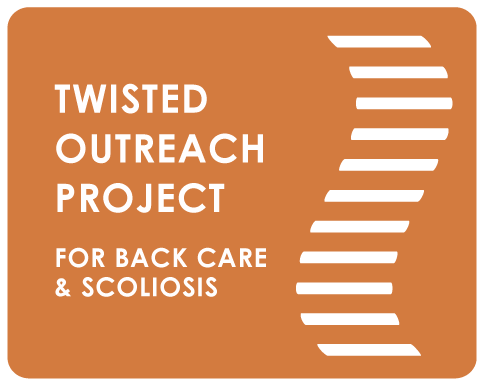Scoliosis Facts!
- Scoliosis is an abnormal curvature of the spine causing compression of one side of the body. Scoliosis also involves a rotation of the spine, in which the individual vertebrae bones twist around the long axis of the spine.
- It's estimated that 4% of all children ages 10 to 14 have detectable scoliosis. About 60% to 80% of all cases occur in adolescent girls. When boys are affected, it usually develops in early childhood.
- Although the exact cause of scoliosis is unknown, genetics is believed to play a role as it often runs in families. When scoliosis develops later in childhood, there's usually no cause found in over 80% of cases; the rest can be due to conditions such as polio, cerebral palsy, juvenile osteoporosis, or other disease.
- Developing scoliosis may go undetected for years, but as the child enters puberty, and is growing more quickly, the degree of spinal bending can dramatically increase and become very noticeable.
- For those with more severe scoliosis, back muscle fatigue and pain may be felt and sometimes the condition can worsen with time. The abnormal compression of the ribs on one side of the body can put pressure on vital organs and can cause a change in function of the heart and lungs if left untreated.
- Treatment is based on the severity of the spine's curvature. About 50% of children with scoliosis will need some form of treatment or at least require close follow-up with a doctor. Prompt treatment will usually prevent the condition from worsening.
- For progressive scoliosis, a customized brace or plaster cast will be needed to hold the spine straight. The brace is made to extend from the hips to the neck, and must be worn for about 23 hours a day. In very severe cases, surgical correction of the spine may be necessary and most commonly involves a spinal fusion with attachment of metal rods to the spine. In the majority of cases, a back brace and/or surgery helps correct the problem. Another treatment sometimes used is electrospinal stimulation. In this procedure, the spinal muscles are stimulated with tiny electrical currents and strengthened, and this helps straighten out the spine.
- A family history of scoliosis is an important risk factor. If you have a family history of scoliosis, take your child to see your family doctor or a paediatrician for early screening. Learn about exercises that can improve posture and strengthen the muscles that support the spine (e.g., abdominal muscles). When detected early and treated appropriately, scoliosis may not progress or cause major disability.
